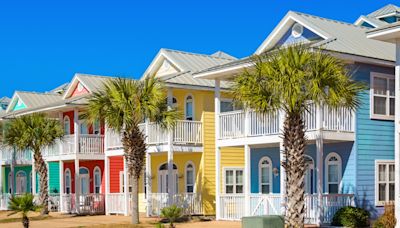Search results
The city sits on the Pearl River and is located in the greater Jackson Prairie region of Mississippi. Jackson is the only city in Mississippi with a population exceeding 100,000 people. Founded in 1821 as new state capital for Mississippi, Jackson is named after General Andrew Jackson, a war hero in the Battle of New Orleans during the War of ...
- Overview
- Land
- Relief and soils
- Drainage
- Climate
Mississippi, constituent state of the United States of America. Its name derives from a Native American word meaning “great waters” or “father of waters.” Mississippi became the 20th state of the union in 1817. Jackson is the state capital.
Mississippi is smaller than most of the U.S. states and is bounded on the north by Tennessee, on the east by Alabama, on the south by Louisiana and the Gulf of Mexico, and on the west by Louisiana and Arkansas. Mississippi is naturally well suited to agriculture; its soil is rich and deep, and its landscape is laced with many rivers. Until the mid-20th century the dominance of a rural, unhurried lifestyle generally worked to the state’s advantage. This way of life was manifest in part in a culture of gentility, the legacy of which is still evident in the many historic mansions located in such old towns as Columbus, Biloxi, Natchez, Vicksburg, and Holly Springs.
Mississippi is a low-lying state, its highest point reaching only about 800 feet (240 metres) above sea level. Except for its hilly northeast corner, Mississippi lies entirely within the eastern gulf segment of the broader Coastal Plain physiographic region. It has generally low topographic elevations and extensive tracts of marshy land. Its major soil areas encompass hills, plains, prairies, river lowlands, and pine woods.
Britannica Quiz
In the northwestern part of the state, the great fertile crescent called the Delta is the old floodplain of the Yazoo and Mississippi rivers, comprising some 6,250 square miles (16,200 square km) of black alluvial soil several feet deep. Once subject to disastrous floods, the land is now protected by levee and reservoir systems.
On the eastern rim of the Delta are the loess bluffs, marking the beginning of the highlands. On the Delta’s western rim a highly fertile band of lowlands parallels the Mississippi River from Vicksburg, south to the Louisiana border. A brown loam belt of varying width extends from Tennessee to Louisiana. Most of southern Mississippi lies in the gently rolling Piney Woods. The coastal area, sometimes called the Coastal Meadows, or Terrace, borders the Gulf of Mexico. This region’s soil is sandy and not well suited to crops.
Exclusive academic rate for students! Save 67% on Britannica Premium.
Learn More
Along the northern edge of the Piney Woods lies the narrow Central Prairie, separated from the Black Prairie by a section of hills and woods. The two prairies, with fertile black soil that is excellent for many types of agriculture, were once the site of large cotton plantations. East of the Black Prairie, in the extreme northeast, are the Tennessee Hills. Arching between Tennessee and Alabama, these hills form the only area in Mississippi in which the terrain is reminiscent of the mountains of the southeastern United States.
West of the Black Prairie another highland area, the Pontotoc Ridge, extends south from the Tennessee border. This ridge, averaging 400 to 600 feet (120 to 180 metres) above sea level, is one of the state’s most distinctive features. Its fertile sandy loam is excellent for orchards. A low-lying narrow region called Flatwoods skirts the western edges of the Pontotoc Ridge and the Black Prairie. Its heavy clay soils drain poorly, and the area has never developed a prosperous economy. The North Central Hills range through northern and central Mississippi and eastward to Alabama. Their red clay soil supports small farms. Before scientific farming methods were widely adopted, erosion depleted vast tracts of land in these hills.
Mississippi has many rivers, creeks, bayous, and other natural drainage networks. The state’s principal river systems include the Tombigbee, now joined with the Tennessee to form the Tennessee-Tombigbee Waterway, which links the Tennessee River with the Gulf of Mexico; the Pascagoula in the southeast; the Pearl in the south-central section; and the...
Mississippi’s location endows it with a favourable climate for agriculture. The growing season is long (virtually year-round on the coast), precipitation is abundant, and extreme temperatures are unusual. Summers are warm, with daily temperatures typically rising from the upper 60s F (about 20 °C) into the low 90s F (about 33 °C) in July and August...
Sep 30, 2024 · Jackson is the capital city of Mississippi. Nestled in the heart of the state, Jackson is not only the largest city in Mississippi but also serves as its administrative, economic, and cultural center. The city was named after U.S. President Andrew Jackson.
- The extraordinary Capitol building.
- The sun setting over LeFleurs Bluff.
- The Greek Revival-style Mississippi Governor's Mansion.
- St. Andrew's Episcopal Cathedral and the Old State Capitol building at dusk.
Jackson is the capital and most populous city of the U.S. state of Mississippi. The city is also one of two county seats of Hinds County, along with Raymond. The city had a population of 153,701 at the 2020 census, down from 173,514 at the 2010 census.
People also ask
What is the capital city of Mississippi?
Where is the Mississippi State Capitol located?
When did Jackson become the capital of Mississippi?
Is Jackson Mississippi a city?
How did Mississippi get its name?
What is Jackson Mississippi known for?
Jackson is the capital and most populous city in the U.S. state of Mississippi. With a population of over 157,000, Jackson anchors the greater metropolitan area which contains over 575,000 residents.


